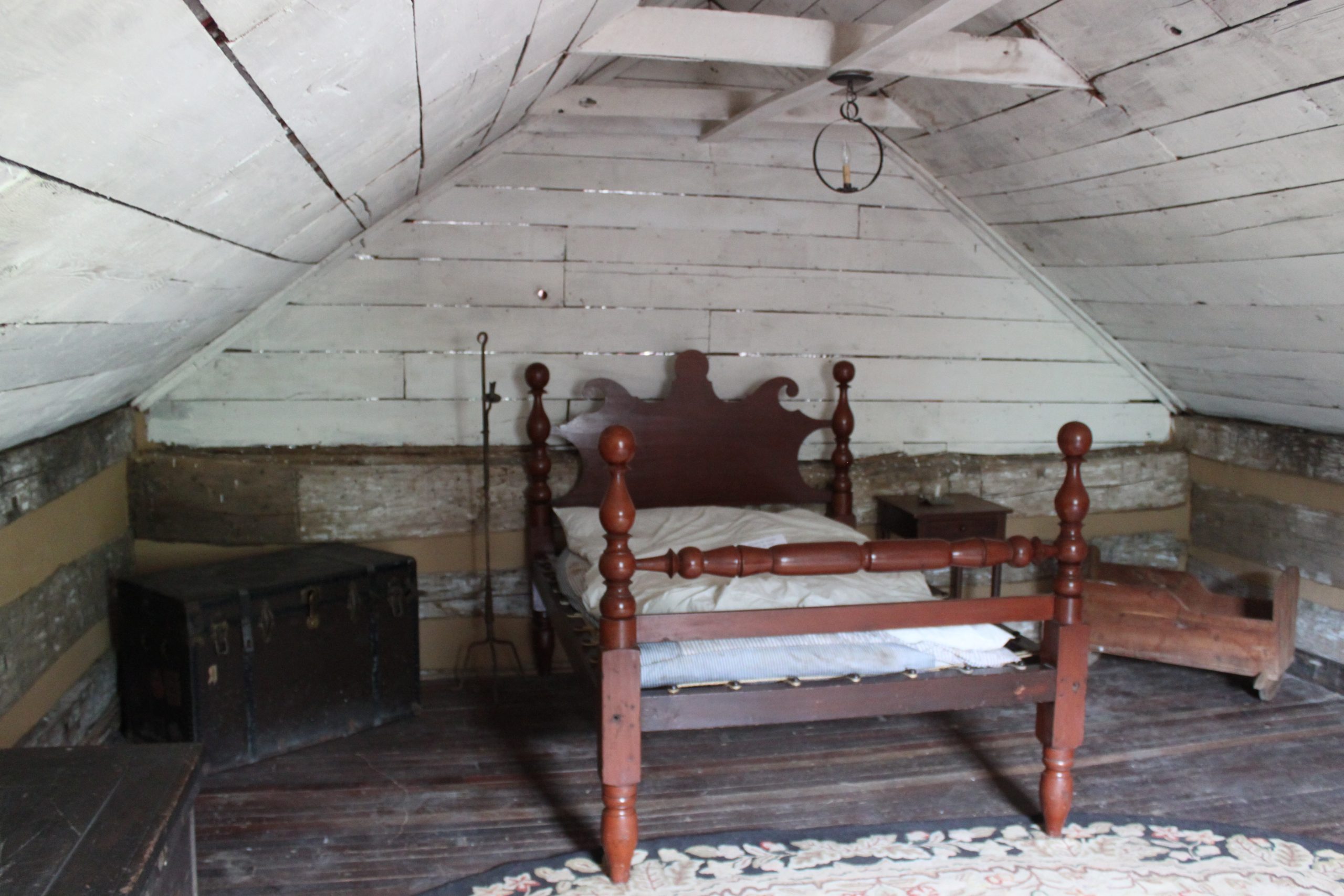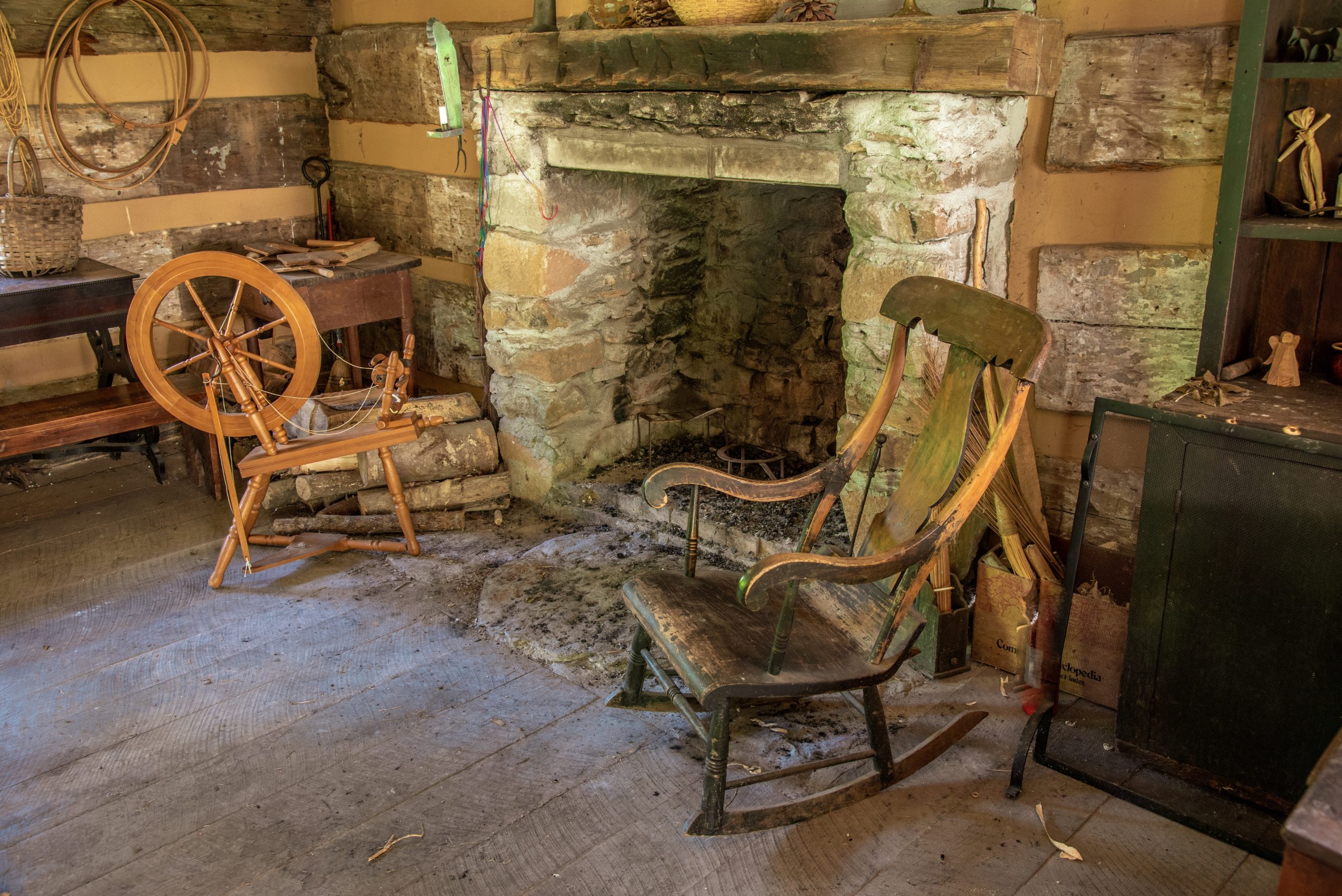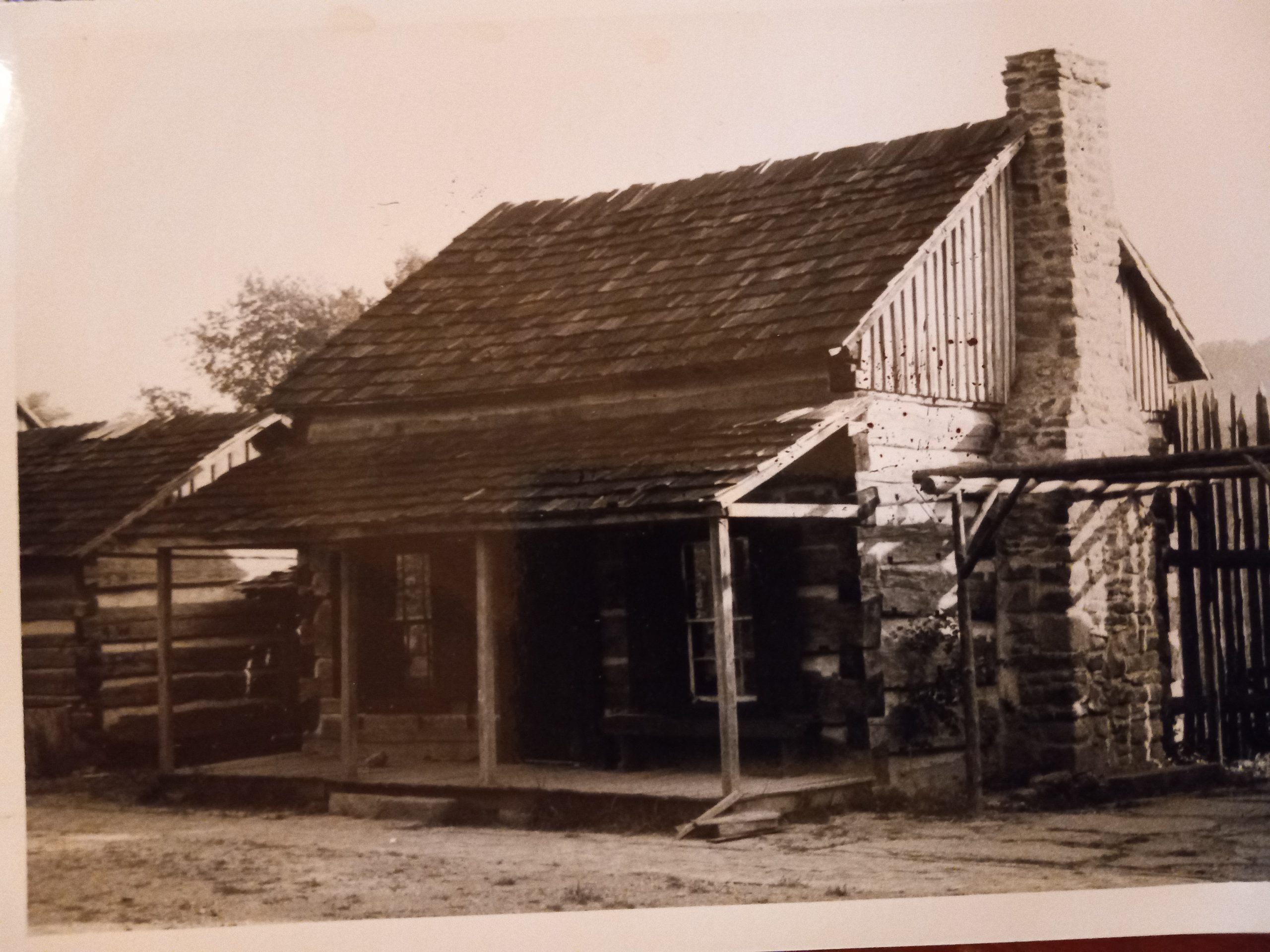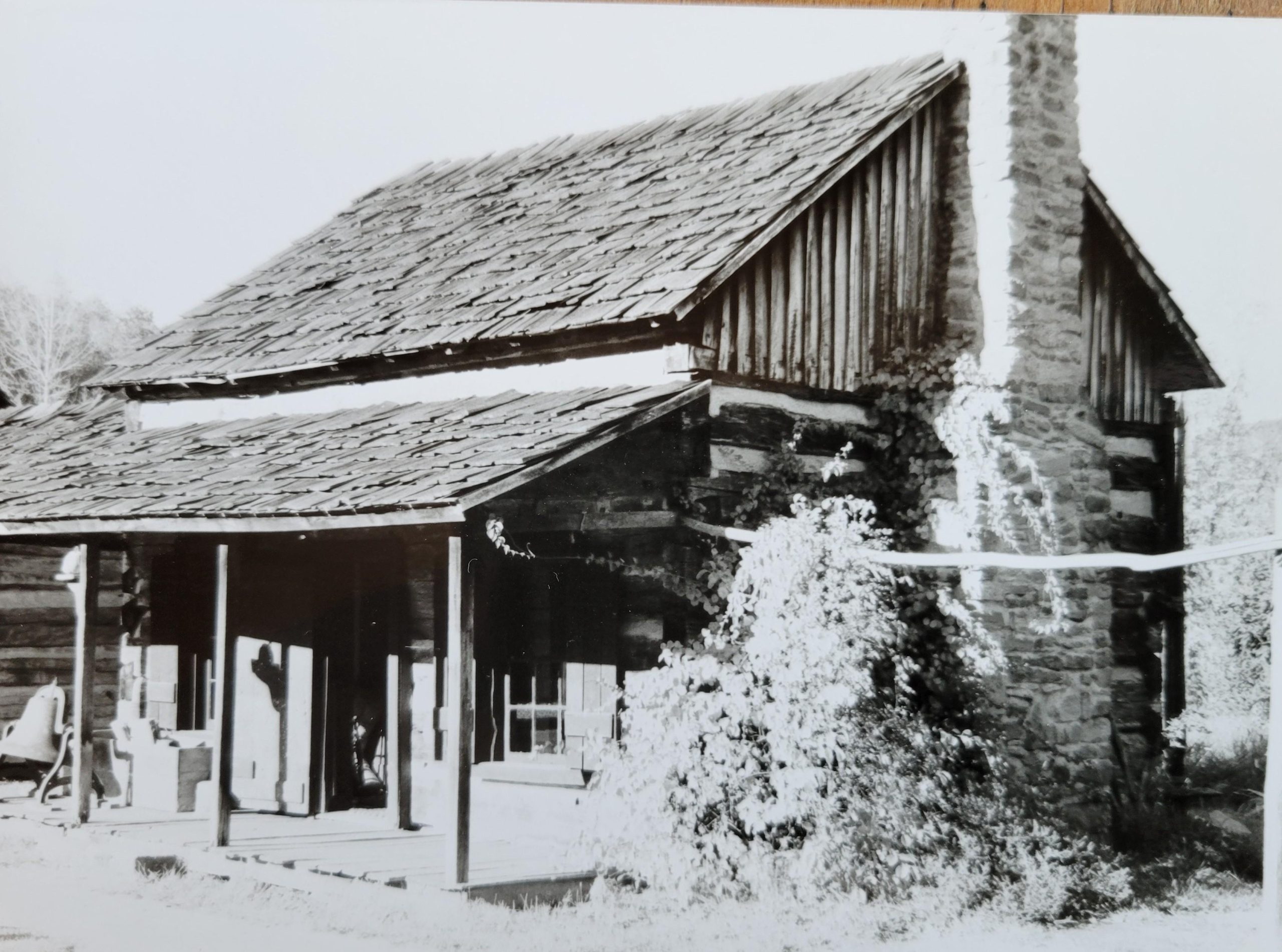MCINTYRES HOUSE
Name of Structure: The McIntyre House / The Needlework Shop
Original Location: Long Run – Doddridge County
Donated By: Darryl Lattea
Flatwall Cupboard Donated By: Lennie Jones of Bristol
Masonry By: Sant Shahan
Original Sponsor: Regina Caulfield
Restoration Sponsor: Hall Drilling, LLC
The deed search for the Andrew McIntyre home or the Needlework Shop reveals this property was owned by Lloyd and Elizabeth Lowndes and Richard Lowndes in 1885. This story and a half house was probably built around the time of the Civil War. The size of the windows and the fact that the upstairs had bedrooms helps to determine this time period. The downstairs would most likely have consisted of one room as it has now. The chimney and fireplace is unique, built the old way without a smoke shelf. It was built with a straight throat that usually does not draw well. Having been with the Fort for some time and in need of repairs, the McIntyre’s House was restored and re-opened in 2011.
Spinning was a chore delegated to girls and women. The men would sheer the sheep in the spring and the wool was then picked and cleaned by all the children, then carded and spun. It is much easier to spin wool “in the grease” or unwashed. Wool is very rich in lanolin. Wool was spun on two types of wheels. One of these was a walking wheel, where it is said the woman would walk as much as twenty miles in a day while spinning. The other type of wheel is a treadle wheel where the woman sat and worked a treadle with her foot.
Flax was also grown for linen thread. It goes through a long process. Once the flax is harvested, it is laid to ret or soak in water to break down the fibers. It then goes through a flax-brake to remove the woody portion, and it is combed. After this process you have a fiber that looks something like a horsetail, but spins into a linen thread.
Early in their life girls learned how to embroider, do crewel work, quilt, and sew. One of the first projects for a girl to accomplish was to make a man’s shirt. Samplers were made to display the embroiderer’s skills. People were very resourceful. For instance, beautiful quilts were created from many scraps of material, such as clothing.
The content of this page was developed by information provided to and written by David Huffman, 2023 Intern Fairmont State University.





